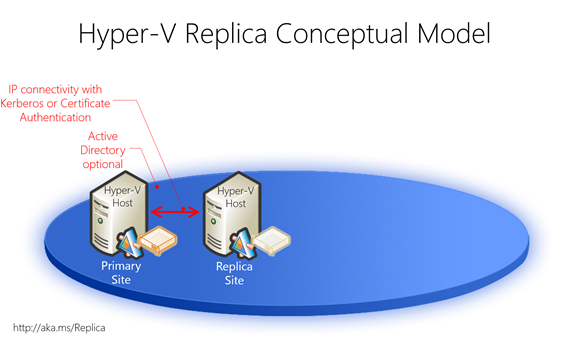Server Virtualization Series: Hyper-V Replica Broker Explained (Part 15 of 20) by Yung Chou
I have talked about Hyper-V Replica many times in the past and have mentioned how great of an option it is for setting up a Disaster Recovery (DR) solution at an affordable price. This is a feature that comes with Windows Server 2012 Hyper-V without any additional cost. Basic configuration is fairly straight forward and easy to do. As with any thing else, there is always more involved and that can be done from a Hyper-V Replica perspective. In Part 15 of the Server Virtualization Series, Yung Chou does a great job of explaining the Hyper-V Replica Broker role and how it can assist in your overall DR solution.
I am including a brief snippet from Yung’s post below. If you want to read the full article, you will need to go directly to his post to read it.
Windows Server 2012 Hyper-V Replica is a built-in mechanism for replicating Virtual Machines (VMs). It can replicate selected VMs in real-time or asynchronously from a primary site to a designated replica site across LAN/WAN. Here a replica site hosts a replicated VM while an associated primary site is where the source VM runs. And either a replica site or a primary site can be a Windows Server 2012 Hyper-V host or a Windows Server 2012 Failover Cluster.
Hyper-V Replica is an attractive Business Continuity and Disaster Recovery (BCDR) solution since not only conceptually easy to understand, but technically straightforward to implement, as demonstrated by the following schematic and the lab introduced later in this article. Further, with many newly added capabilities and flexibilities in Windows Server 2012 such as Storage Space, continuously available file share, Hyper-V over SMB 3.0, etc. a BCDR is no longer an academic exercise, but with Hyper-V Replica a feasible solution within reach. It is an ideal and affordable BCDR solution for small and medium businesses.
 Hyper-V Replica is also applicable to a failover cluster. And this lab, https://aka.ms/ReplicaBroker, details the processes, steps, and operations in implementing Hyper-V Replica Broker in failover cluster settings. For those who are new to Hyper-V Replica, a walk-through of Hyper-V Replica essentials is available at https://aka.ms/Replica.
Hyper-V Replica is also applicable to a failover cluster. And this lab, https://aka.ms/ReplicaBroker, details the processes, steps, and operations in implementing Hyper-V Replica Broker in failover cluster settings. For those who are new to Hyper-V Replica, a walk-through of Hyper-V Replica essentials is available at https://aka.ms/Replica.
Hyper-V Replica Broker
With a failover cluster of Hyper-V hosts in place, one needs to first configure a Hyper-V Replica Broker role using Failover Cluster Manager. Then enable Hyper-V Replica on the Hyper-V Replica Broker. Ordinarily, Hyper-V Replica can be enabled in the Hyper-V Settings of a Hyper-V Host. However in a failover cluster, the Hyper-V Replica configurations are grayed out in an individual Hyper-V host’s Hyper-V Settings and to be managed through the Hyper-V Replica Broker role configured with Failover Cluster Manager.
The schematic below depicts that the employment of a Windows Server 2012 Hyper-V failover cluster as a Hyper-V Replica Site is through the cluster role, Replica Broker. Instead of operating directly onto a Hyper-V host as in a non-clustered environment, the process of replicating a VM is to now specify a Replica Broker as a replica site. The Replica Broker will then place the VM onto the associated failover cluster storage accordingly.
- See more at: https://blogs.technet.com/b/yungchou/archive/2013/03/24/hyper-v-replica-broker-explained.aspx#sthash.YbeZZ9gp.dpuf
Harold Wong